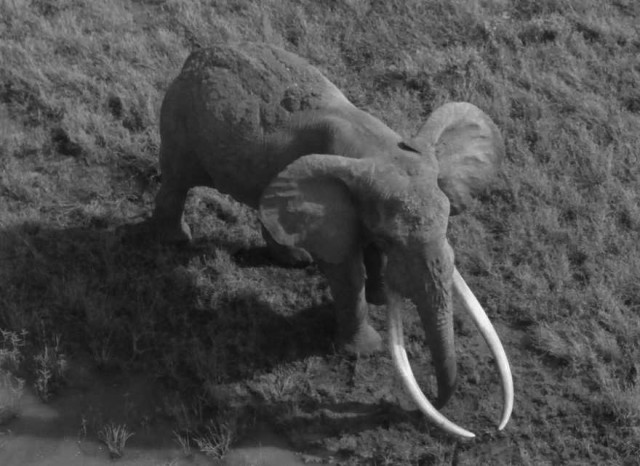Today news broke that the world’s largest elephant, Satao, is dead, killed by poachers for his tusks. Satao is dead to feed the global demand for ivory. Satao was just 45 years old and he easily had another 15 to 25 years to live.
Satao’s passing has all of Kenya mourning. He was an iconic elephant. He was such a phenomenal elephant that he was provided a lot of protection. He lived in the Tsavo East National Park in northern Kenya. The Kenyan Wildlife Service (KWS) kept a watchful eye on him in an attempt to protect him. Yet in spite of all this, poachers were able to hunt Satao down and steal his ivory.
Satao was an extraordinarily intelligent elephant. It seemed that he knew that he was being hunted for his tusks, so he hid in the bushes most of the time. But all Satao’s wisdom was not enough against modern day poachers using GPS, hunting gear, and night vision goggles.
Satao’s death shows how hard conservation is. But we must not misstate the problem. On the surface it appears as if poachers killed Satao. But that is just part of the story, Satao has been killed by all those who use ivory and ivory products. If there was no demand for ivory Satao would have been alive today. Our choice to use ivory is the cause for death of thousands of elephants every year. It appears as if the demand is coming from China and Thailand. But these two countries are using ivory in products that are then exported all over the world. Ivory is used to make chopsticks, jewelry, ornaments, art work, hair accessories, and decorative pieces. When we buy these products we feed the demand and at the other end of the supply-chain an elephant is killed. Every year, upwards of 20,000 elephants are slaughtered for their ivory.
Satao’s story illustrates that as consumers we have tremendous impact on the environment. But it is not just about ivory. It is about the general patterns of our consumption. We have to ask ourselves if our consumption of any given thing is sustainable or not. In case it is not sustainable we must look for alternatives or change our behavior to minimize or avoid its use. We need to move from being blind consumers to being conscious consumers. Because our choices have consequences.
Related:
Kenya’s biggest elephant killed by poachers
A beautiful video of a woman singing lullaby to an elephant

